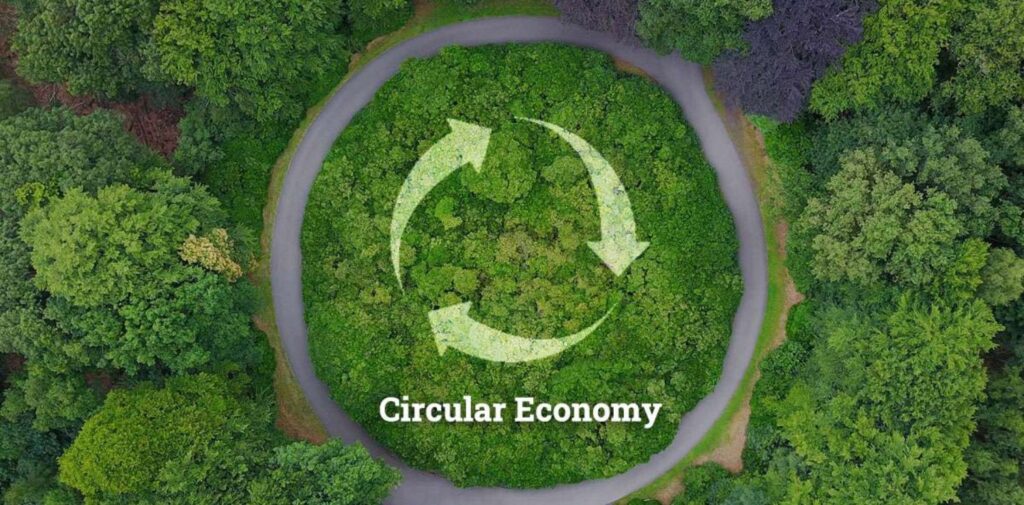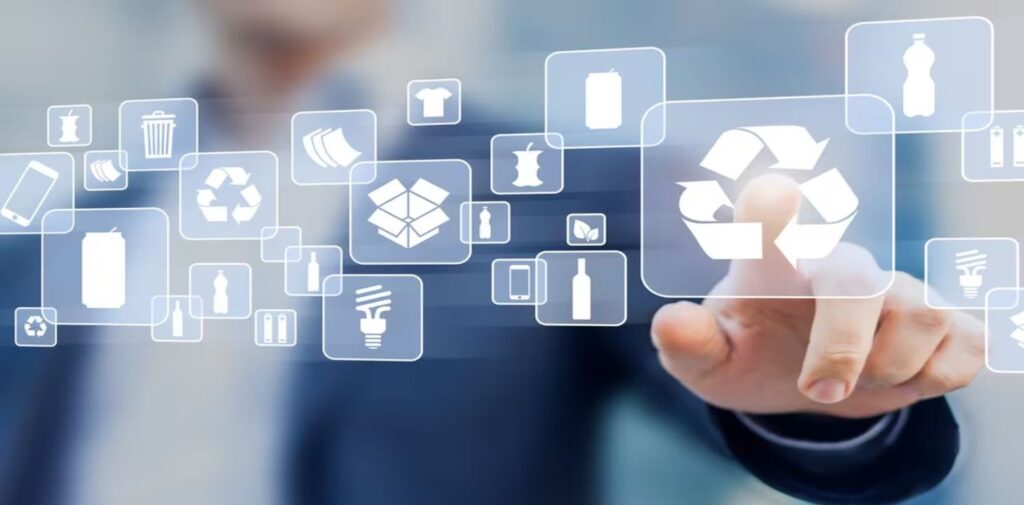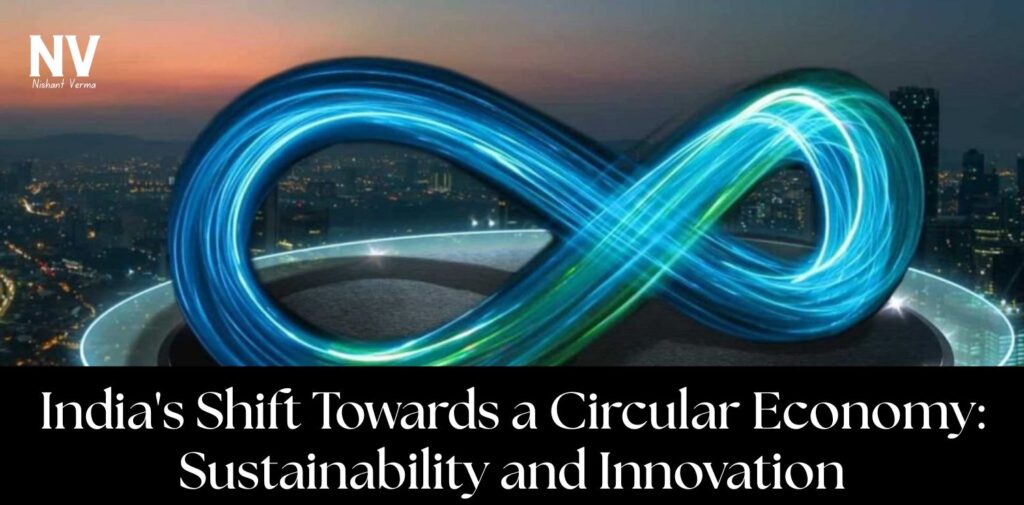In recent years, India has been making significant strides towards embracing a circular economy, a model that promotes sustainability, resource efficiency, and innovation. As one of the fastest-growing economies in the world, India faces numerous environmental challenges, such as increasing waste, resource depletion, and pollution. The shift towards a circular economy provides a solution to these challenges by rethinking traditional business models and focusing on reducing, reusing, and recycling resources. This article explores how India is adopting circular economy practices, the importance of sustainability, and the role of innovation in this transformation.
Understanding the Circular Economy Concept
The circular economy is an alternative to the traditional linear economy, which follows a “take, make, dispose” pattern. In the linear model, resources are extracted, used to create products, and eventually discarded as waste. This leads to resource depletion, environmental harm, and increased waste generation. In contrast, the circular economy aims to minimize waste and make the most of available resources by keeping products and materials in use for as long as possible. It focuses on designing products that can be easily repaired, reused, refurbished, or recycled.
For India, transitioning to a circular economy is crucial due to its growing population, rapid urbanization, and increasing demand for resources. The country’s shift towards circular practices promises a more sustainable future, reducing the environmental footprint and enhancing economic growth by creating new opportunities for businesses, industries, and consumers.

The Role of Government in Promoting a Circular Economy
The Indian government has recognized the importance of a circular economy in addressing environmental concerns and promoting sustainable development. In recent years, various policies and initiatives have been introduced to support this transition.
One of the key steps taken by the government is the National Resource Efficiency Policy, which aims to promote resource efficiency and reduce waste generation across various sectors. This policy encourages industries to adopt circular economy principles, such as recycling, reusing, and reducing waste in their production processes. Additionally, the government is working on implementing extended producer responsibility (EPR) regulations, which require manufacturers to take responsibility for the end-of-life disposal of their products. This encourages companies to design products that are easier to recycle and reuse.
The government’s Swachh Bharat Abhiyan (Clean India Mission) has also contributed to the shift towards a circular economy by promoting waste management practices, encouraging recycling, and improving waste disposal systems. As part of this initiative, waste-to-energy projects are being launched in various cities to convert waste into energy, contributing to both waste reduction and sustainable energy generation.
Circular Economy in Indian Industries
The concept of a circular economy is gaining traction across various industries in India, and businesses are increasingly adopting sustainable practices. Industries such as textiles, manufacturing, and construction are exploring ways to reduce waste, increase resource efficiency, and promote recycling.
In the textile industry, which is one of the largest contributors to waste, companies are focusing on sustainable practices such as using recycled fibers, reducing water usage, and adopting eco-friendly dyeing methods. For example, companies like Arvind Limited have adopted circular models by using recycled polyester and cotton fibres to create new clothing items, thereby reducing the environmental impact of textile production.
In the manufacturing sector, companies are embracing circular principles by designing products with longer life cycles, allowing them to be repaired, refurbished, or recycled. For instance, Indian automobile manufacturers are exploring ways to reduce waste in production processes and promote the recycling of materials used in vehicle manufacturing. The automotive industry is also investing in the development of electric vehicles (EVs) and sustainable battery technologies, further contributing to sustainability goals.
The construction industry is another sector where circular economy practices are gaining momentum. Companies are focusing on sustainable building materials, energy-efficient construction techniques, and waste reduction during construction and demolition. The use of recycled materials in construction, such as fly ash and recycled steel, is becoming more common, helping to reduce the demand for raw materials and minimize construction waste.

Innovative Solutions for Waste Management and Recycling
One of the key components of the circular economy is effective waste management and recycling, and India is witnessing innovation in this area. With the country’s growing population and urbanization, waste generation is a significant challenge. However, innovation is playing a vital role in addressing this issue by creating new ways to manage waste and recycle materials.
Startups and businesses in India are developing innovative solutions to handle various types of waste, from plastic and electronic waste (e-waste) to food and industrial waste. Companies like Barefoot College are promoting sustainable practices by training women in rural areas to recycle e-waste and extract valuable materials, such as copper and gold, from discarded electronics. This not only reduces the environmental impact of e-waste but also creates livelihood opportunities for local communities.
Additionally, the recycling of plastic waste has become a major focus for Indian businesses. Companies like Plastics for Change are working to establish sustainable plastic waste management systems, including the collection, sorting, and recycling of plastic waste. Through these initiatives, they are not only reducing plastic pollution but also creating economic value by turning waste into a resource that can be reused.
In the food industry, innovative solutions are being implemented to minimize food waste. Companies are using technology to optimize supply chains, reduce waste in food production, and encourage the donation of surplus food. For example, KhaanaChahiye is a platform that connects food donors with those in need, ensuring that excess food is not wasted and is instead distributed to those who need it.
Consumer Role in Circular Economy Transition
While businesses and governments play a critical role in driving the circular economy, consumers also have an important part to play in this transition. In India, awareness about sustainability and the circular economy is gradually increasing, and consumers are becoming more conscious of their consumption patterns and environmental impact.
One of the ways consumers can contribute is by adopting more sustainable lifestyles. This includes buying fewer single-use products, choosing products made from recycled materials, and supporting companies that prioritize sustainability in their operations. For example, consumers can opt for clothes made from recycled fibres or electronics that can be easily recycled or repaired, reducing the demand for new raw materials and minimizing waste.
Another way consumers can support the circular economy is by participating in waste segregation and recycling programs. Many Indian cities are encouraging citizens to segregate their waste into dry, wet, and hazardous categories, which makes it easier to recycle materials and manage waste. By being more responsible with waste disposal, consumers can help ensure that recyclable materials are properly processed and reused, rather than ending up in landfills.

Challenges and Opportunities in India’s Circular Economy Shift
While India shift towards a circular economy holds great promise, there are several challenges that need to be addressed for this transition to be successful. One of the main challenges is the lack of infrastructure for waste management and recycling in many parts of the country. In rural and remote areas, waste collection systems are often inadequate, and there is limited access to recycling facilities. Expanding and improving waste management infrastructure is crucial for the widespread adoption of circular practices.
Another challenge is the lack of awareness and understanding of the circular economy among both businesses and consumers. While awareness is growing, more needs to be done to educate people about the benefits of circular practices and how they can contribute to sustainability. Government initiatives, educational programs, and campaigns can help bridge this knowledge gap and promote the adoption of circular economy principles.
Despite these challenges, there are numerous opportunities for India to lead the way in the global transition to a circular economy. The country has a large and growing market for sustainable products and services, as well as an increasing number of startups and innovators focused on circular solutions. By fostering collaboration between businesses, governments, and consumers, India can become a global leader in sustainability and circular economy practices.
Conclusion: India Shift Towards a Circular Economy
India shift towards a circular economy is an essential step towards creating a more sustainable and resource-efficient future. With strong government support, innovative solutions from businesses, and increasing consumer awareness, India is well on its way to embracing circular economy principles. While there are challenges to overcome, the opportunities for growth, innovation, and environmental impact are immense. By promoting sustainability through circular practices, India can not only protect its environment but also create new economic opportunities, reduce waste, and build a more sustainable future for generations to come.




